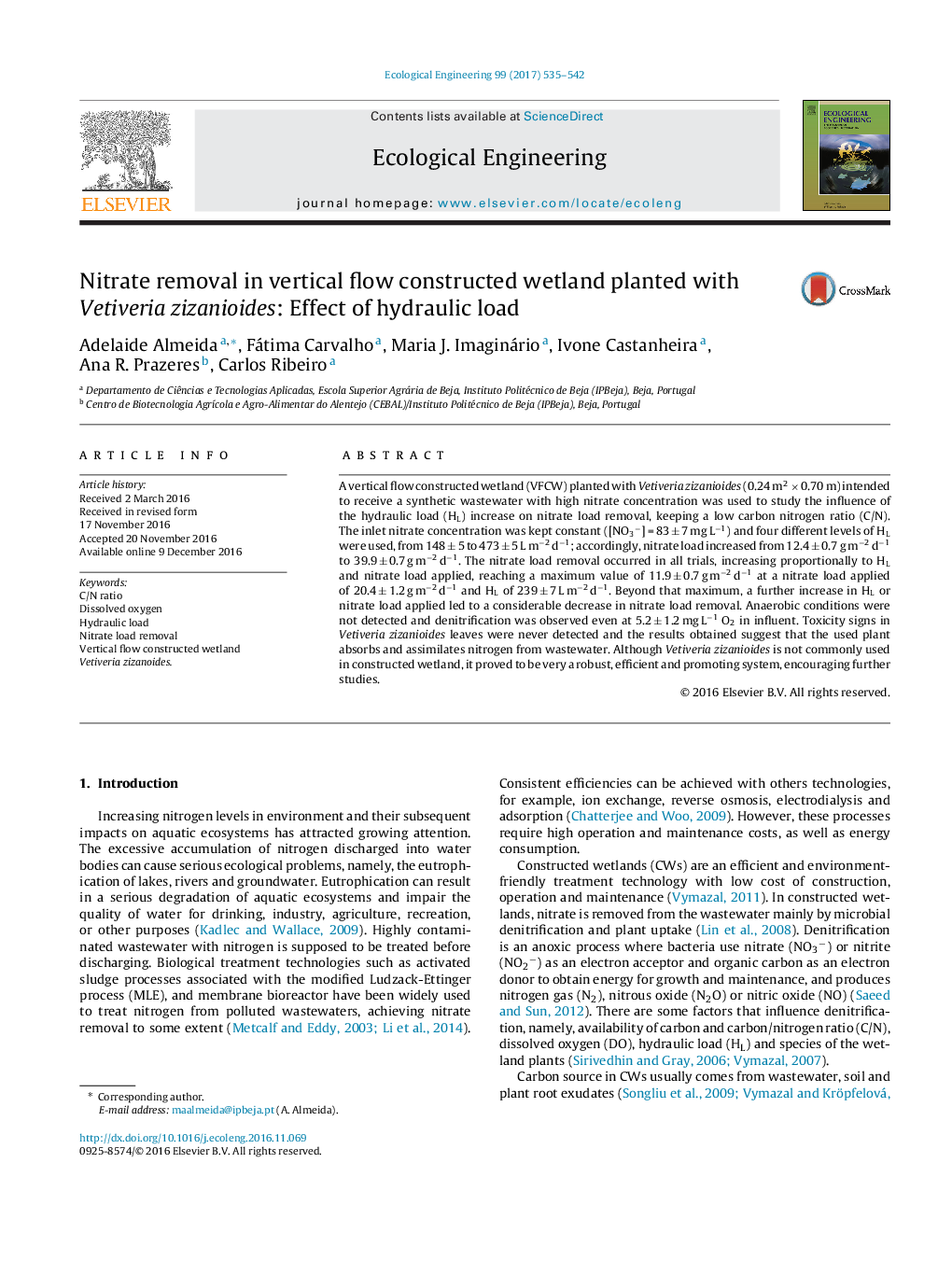| Article ID | Journal | Published Year | Pages | File Type |
|---|---|---|---|---|
| 5744024 | Ecological Engineering | 2017 | 8 Pages |
â¢VFCW planted with Vetiveria zizanioides was used for nitrate removal.â¢Nitrate removal occurred with DO at 5.2 ± 1.2 mg O2 Lâ1 in influent.â¢Nitrate load removal under various HL and hydraulic retention times.â¢Effect of nitrate load applied on nitrate load removal was observed.
A vertical flow constructed wetland (VFCW) planted with Vetiveria zizanioides (0.24 m2 Ã 0.70 m) intended to receive a synthetic wastewater with high nitrate concentration was used to study the influence of the hydraulic load (HL) increase on nitrate load removal, keeping a low carbon nitrogen ratio (C/N). The inlet nitrate concentration was kept constant ([NO3â] = 83 ± 7 mg Lâ1) and four different levels of HL were used, from 148 ± 5 to 473 ± 5 L mâ2 dâ1; accordingly, nitrate load increased from 12.4 ± 0.7 g mâ2 dâ1 to 39.9 ± 0.7 g mâ2 dâ1. The nitrate load removal occurred in all trials, increasing proportionally to HL and nitrate load applied, reaching a maximum value of 11.9 ± 0.7 g mâ2 dâ1 at a nitrate load applied of 20.4 ± 1.2 g mâ2 dâ1 and HL of 239 ± 7 L mâ2 dâ1. Beyond that maximum, a further increase in HL or nitrate load applied led to a considerable decrease in nitrate load removal. Anaerobic conditions were not detected and denitrification was observed even at 5.2 ± 1.2 mg Lâ1 O2 in influent. Toxicity signs in Vetiveria zizanioides leaves were never detected and the results obtained suggest that the used plant absorbs and assimilates nitrogen from wastewater. Although Vetiveria zizanioides is not commonly used in constructed wetland, it proved to be very a robust, efficient and promoting system, encouraging further studies.
Graphical abstractDownload high-res image (137KB)Download full-size image
